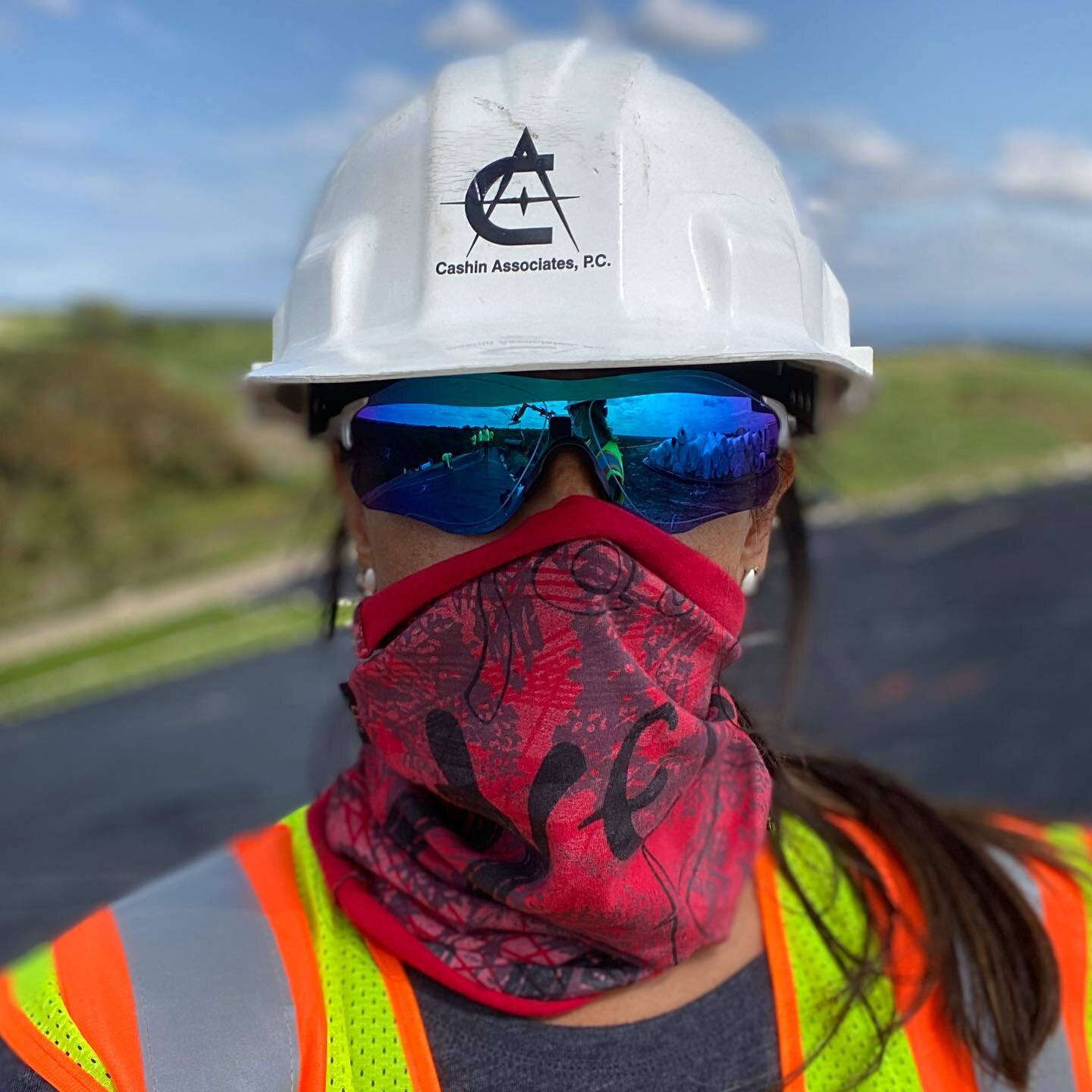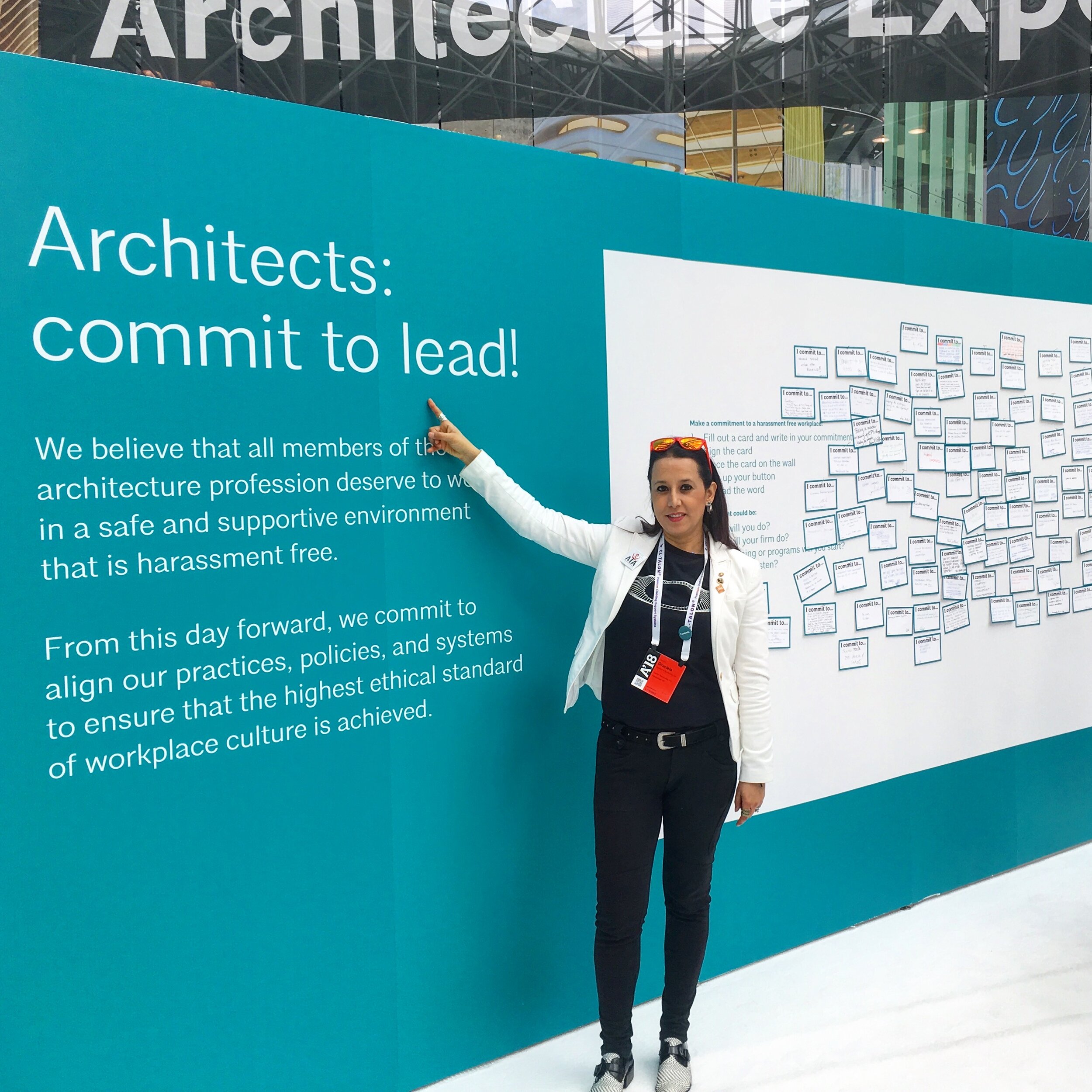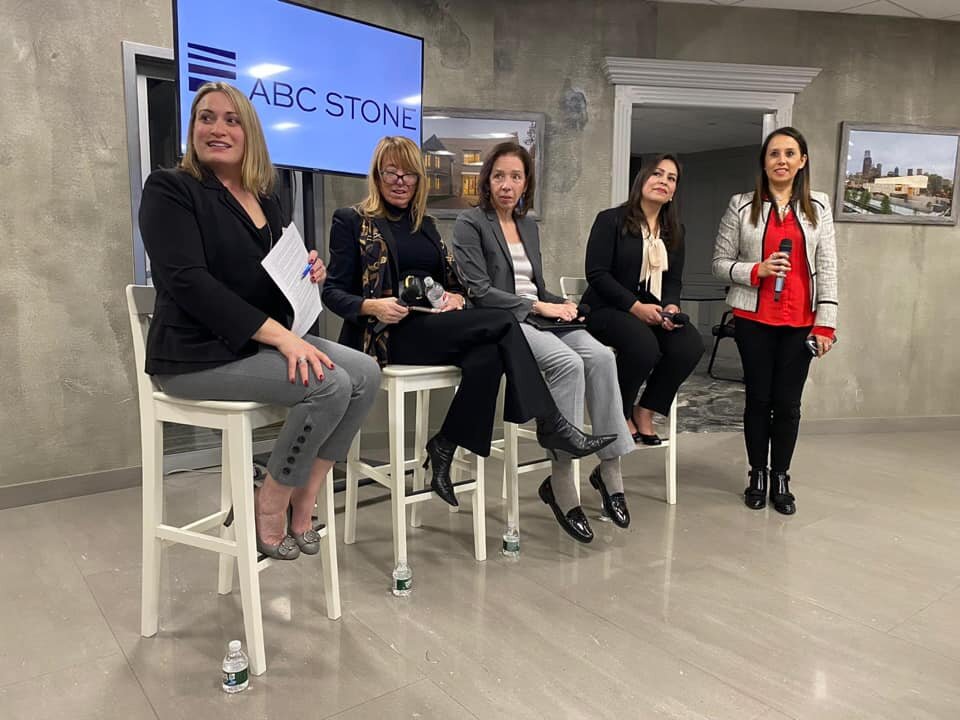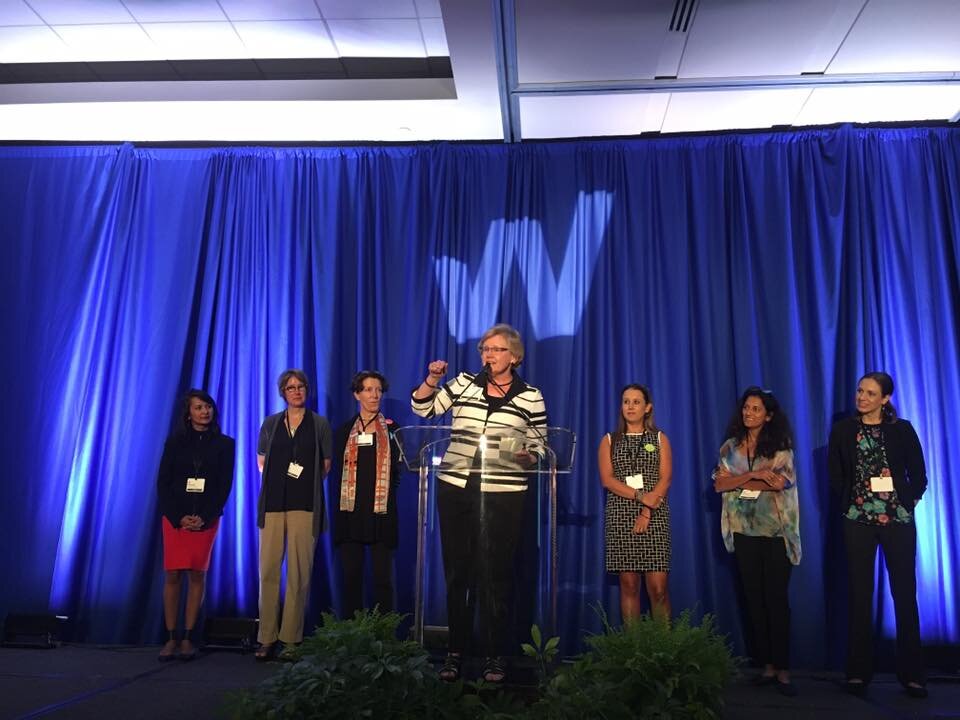GRACIELA CARRILLO, AIA, LEED AP BD+C
Portrait courtesy of Graciela Carrillo.
Senior Manager at Nassau BOCES, Facilities Services
Originally from Colombia, Graciela Carrillo, AIA, immigrated to the United States in 2003. She worked as an Architect for Cashin Associates, P.C where she led all scales of urban design, planning, and architectural projects. Recently, she joined Nassau BOCES Facilities Services as a Senior Manager where she is in charge of coordinating school’s related projects.
Graciela has committed almost a decade of volunteer leadership service to the American Institute of Architects (AIA). She has been involved with the AIA at the local, state, and national level, currently serving as the President 2020-2021 as well as the Chapter’s Women In Architecture Founder and Co-Chair. On a National and State level, Graciela was the past 2017-2018 NY Regional Director (YARD) for the Young Architects Forum (YAF). Graciela is also the Co-Founder of the Immigrant Architects Coalition, a group committed to helping and providing resources for immigrant architects to achieve a prosperous career in the In 2019, Graciela was the recipient of the AIA NYS Young Architect Award. Through her volunteering at the AIA, Graciela has had an abundance of career enrichment and professional development. Of particular interest is providing a voice for immigrant professionals established in the U.S., and encouraging and supporting them in their path towards licensure and professional development, since she experienced, firsthand, the challenges of being educated in a foreign country while ultimately acquiring a professional license in NYS.
Last year, Graciela founded the Powerful Speeches platform in an effort to champion women architects, to promote, advance, and elevate women in our profession.
Navigating the Profession and Powering Through For Equality
What inspired you to pursue a career in architecture?
I come from a family of civil engineers, my dad, and two brothers. I'm the youngest in the family. I grew up surrounded by them, working in construction sites and designing amazing projects in Colombia. I always thought that I was going to pursue a career in civil engineering, but at the same time, I was very creative and loved arts. Architecture was the perfect career to follow both of my passions: design and construction. Ultimately, once I graduated from an architectural school in Colombia, I started working for an Engineering firm in the Construction Management of 48 low-income residential 4-story-buildings. Then I worked for the city's government agency coordinating large city infrastructure projects. I then moved to the US to work for an engineering consulting firm based in Long Island, NY. In conclusion, even though I graduated from architectural school, I have always been able to work for engineering firms, allowing me to learn and perform engineering tasks.
Construction Management Work.
Coming from Bogota, Colombia, how did you navigate the architectural field in the United States? What was the process like, to navigate the Architectural Review Examination and Experience process to earn licensure? Were there any mentors who guided you?
Navigating the licensing path was not an easy process. First of all, I worked for an Engineering firm where there was only one Architect besides me. For that specific reason is that I joined AIA to network and connect with other architects. The Architect at my firm was my mentor in topics related to the IDP process and ARE exams. My degree was from another country, and it was hard to navigate the degree validation process because of the lack of guidance. I was the only immigrant Intern Architect at my firm (I always was the only one), so I didn't know anyone else who went through validating a foreign degree. At that time, there were no resources to find guidance or help on the process, so it took me twice the time to go over the NAAB approval to obtain my NCARB record to start testing. These days, there are a lot of resources and support groups that guide people.
Graciela at the A18 Architects to Commit Wall.
How did AIA Long Island (AIALI) help you grow your network and meet new people in the built industry? What is the importance of connecting to local AIA chapters as an emerging professional?
Joining the AIA LI Chapter provided me the opportunity to network with professionals with diverse backgrounds and experience. Networking is an essential task if you want to learn from others. Most importantly, participating in Chapter Committees, initiatives, programs will allow emerging professionals to develop leadership skills. You become a leader, not by education but through actions and establishing relationships that aim to the same objective. As an emerging professional, you can reach out to other leaders that can mentor you on following that path.
AIA NYS Representatives to Grassroots Conference 2018.
Graciela recipient of the AIA NYS Young Architect Award 2019.
Tell us about your first experience as an architectural designer in the United States? What was your favorite memory? What was your favorite project?
Once I arrived in the US and started working at the engineering company, I realized how much I had to learn. The first obstacle was learning the imperial system as opposed to the metric system used in Latin America. I was also learning about building codes and design standards. One of my favorites memories was attending the first ribbon-cutting ceremony of a project I helped design. The satisfaction of completing a project and seeing how it gets recognition by the community was vital, but most importantly, watching the community using the space and enjoying the experience.
Port Jefferson Center Public Space.
One of my favorite projects was the completion of a public waterfront park and community building. I worked in the public space design, parking area, and an ice rink for winter ice skating. I also worked during the construction management of those areas. It was my favorite because the park site was contaminated with lead and other pollutants because of the production of ships. The place was a former shipyard warehouse. We capped the contaminated soil material, designed a drainage system to manage stormwater, and built a park over the existing capped contaminated soils. Seeing the transformation of an ugly stinky area with a waterfront view into a beautiful park used by the community and attracts lots of local visitors and tourists is a remarkable experience.
As Co-Chair of the Women in Architecture committee at AIALI, how do you make the built industry a better place for emerging professionals? What is the necessity of having a space dedicated to women in architecture, particularly for women in AIALI?
Women in architecture represent 39% of the licensed professionals. We are still a minority within the profession, but every year that percentage increases as per a yearly survey published by NCARB. Yet, women earned 16% less salary than men, in accordance with a study done by Narrowthegap. Because of this gap, we need to have the support network and resources to advocate for ourselves. Particularly at AIA LI Chapter, only 16% of our members are women, which is a small percentage. I co-founded the Women in Architecture Committee to create a space/group for networking, communication, leadership skills, and advocacy.
Panel Event with NAWIC and AIALI WIA.
AIA LI WIA Event 2019.
In addition to being the Co-Chair of the Women in Architecture committee at AIALI, tell us about Powerful Speeches. How do you hope Powerful Speeches serves as a tool to empower women?
Powerful Speeches was created in the middle of the COVID-19 shutdown to unite and engage all the Women in Architecture Committees. There were so many incredible WIA-related events around the country that I realized I could create a platform where you could go and see what was available or happening during the month. The website started as a calendar that lists some of the WIA events, and it includes the information of the event and registration link. After a while, I came up with more ideas. I like to listen to podcasts, so I researched design-related podcasts created by women in the design industry. I compiled about 23 podcasts on the website on the "What To Listen" page.
Women in Architecture at A19 Conference.
Voices of Plurality Flash Mob at A18 Conference.
Congratulations on becoming the third woman and first Latina president of AIA Long Island, a 71-year-old chapter! How do you hope to help the next generation of AIA Long Island members navigate the built industry and gain their licensure?
Thank you! I'm very proud of achieving that position within my Chapter. The second woman that served as a President was 16 years ago. When I joined the Board of Directors as an Associate in 2012, another woman served as a Director. A year later, she stepped down, and I was the only woman serving on the Board for many years. Two years ago, a Katty Brath, Assoc. AIA, a young professional, joined the Board as the Associate Director, and last year, a third woman, Renee Marcus, AIA was elected as the Secretary. So I'm pleased to lead the change in diversity at the leadership level.
AIA LI Chapter Board Installation 2020.
Throughout our Emerging Professionals Committee, the Chapter provides support and guidance to young professionals in navigating the built industry and licensing path. We created a study group that hosts weekly meetings with about 15-20 participants. I mentor and advise professionals that want to start their licensing process. They usually reached out to me through LinkedIn or Facebook after listening to a few podcasts where I have talked about my licensing path.
Tell us about Immigrant Architects Coalition. What inspired you to co-found this organization?
When I arrived in the US, I didn't know where to start with validating my architectural degree, my work experience. Because of the lack of a support system and not knowing how to navigate it, I applied for the EESA evaluation. The EESA evaluation validates your foreign degree and certifies that it is an equivalent NAAB-approved degree. It is a lengthy and expensive process that is required by certain states to apply for licensure. I filed for the EESA, and later on, I found out that NYS didn't need that evaluation, so I lost time and money. After all my past struggles, I started helping new immigrants in the process until one day, my colleague Yu-Ngok Lo contacted me to participate in a session for A19, the AIA National Conference.
Presenting at A19 Conference- How Immigrant Architects Can Prosper in the U.S.
The Immigrant Architects Coalition is an initiative that started in 2019 where three of us, all architects immigrants, got together to present at A19 in Las Vegas the session "How Immigrant Architects Can Prosper in the US". After the session, we noticed among the session attendees the need for a support network to navigate the professional, cultural, and legal paths to succeed in this country. The Coalition is developing a comprehensive guide with other immigrant architects' help to provide resources and mentoring opportunities.
Presenting at 2020 AIA Oklahoma Conference.
What is one piece of advice for the next generation of aspiring women architects?
Mentoring is as important as continuing education. I would advise aspiring women architects to find their mentors, not one, but many of them. They will be your biggest supporter, adviser and will encourage you to reach beyond your comfort zone. Us women need to place ourselves outside our comfort zone. This would challenge us to be more resilient, creative and to develop leadership skills.
Graciela at the AIA Women Leadership Summit 2017 - Scholarship Recipient.
Licensing should be a priority if you plan to stay in a traditional architectural business path. Licensure will provide career fulfillment. A survey conducted by AIA National found that women leave the profession for many reasons, including lower salaries than men, lack of advancement opportunities, inflexible schedules and long hours which are an obstacle to maintain a work-life balance.
Lastly, improving or developing soft skills is imperative for a successful career. Soft skills are as important as hard skills. Hard skills develop during undergraduate or graduate school. Soft skills are social, communication, advocacy, and flexibility skills. The ability to effectively communicate ideas and projects relate to other peers and lead teams are skills that firms value immensely. Those skills will contribute to healthy firm culture.
And don’t forget to enjoy life, dedicate time to your family, friends, and hobbies to achieve a work-life balance.
Graciela performing one of her hobbies: Halloween Costume competition in NYC.
In terms of rising concerns and problems (in the architectural profession) over the past year, what is one change that you wish saw would happen and it did not?
I want to open the conversation, disclose salaries, and change it from a Taboo topic to an open discussion where everyone would benefit from it, especially women in any profession.
















